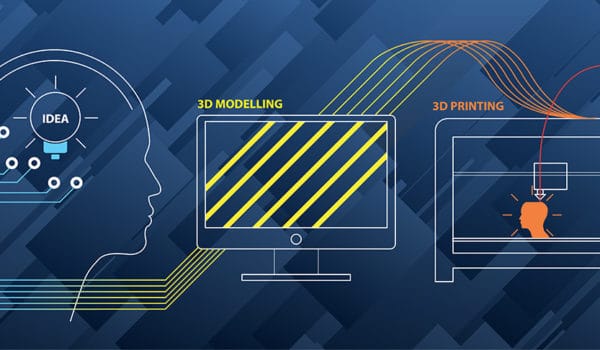Innovation has become a term everywhere, especially in the business sector, since the world is constantly threatened by change as technology advances at an unparalleled rate.
Any business that doesn’t prioritize innovation is getting ready to be overtaken or sucked up by the competition. The example of IBM being overtaken by Microsoft and Apple is a good illustration of the significance of innovation. Disruption is a term that describes the changes brought about to a market, industry, or corporation by new technology or by a young firm entering the market with a novel method of operating. Businesses have good reason to worry about disruption. Because of a lack of innovation, entire companies have failed. A corporation may avoid disruption only if it stays one step ahead of the competition. To prevent being out-innovated, the business should take innovation seriously, make investments in research and development, and monitor what its rivals are up to.
For large, well-established businesses, whose success is often determined by the optimization of current operations and established methods of doing things rather than by innovation and game-changing inventiveness, innovation is extremely difficult. So, how can established companies that want to remain ahead of the curve embrace creativity? Here’s the list of the most important essentials for innovation in a company.
Aspiration
The firm must first admit that innovation is vitally necessary for growth before it can begin to innovate. Many businesses may not always operate in this manner. Many businesses are still dominated by outdated ways of thinking and conducting business, which causes them to constantly lag behind and only accept new technologies when it becomes uncomfortable to stick with the old ones. Such businesses have already failed at the first stage, which involves recognizing the value of innovation and creating cascading goals to reflect this. Simply acknowledging the value of innovation is insufficient. The firm also has to demonstrate this in action by planning for it. The principal way a firm expresses its commitment to a given course of action is in the plans it creates.
A compelling vision alone, however, is insufficient. How much innovation would the firm need to achieve its goals for financial development should be the subject of its innovation desire, according to the corporation. To put it another way, the innovation goals should be measurable. While some businesses use this as part of their strategy and planning procedures, the majority do not. When the goal for innovation is measured, a manager may make the necessary trade-offs to guarantee that innovation occurs along with the rest of the company operations. This firm actually practices what it preaches, as opposed to others where the CEO declares that the company will prioritize innovation but other business operations still take up the majority of resource allocation. The targets should have both quantitative and qualitative metrics. The targets should be cascaded throughout the organization. It should also be clear who will be involved in innovation and what specific aspects of the overall goal they are tasked with delivering.
Discovery
The process of discovery entails taking a close look at the market’s current reality and extrapolating a potential future reality from it. In other words, consider the current situation while imagining the worst or best case possibilities for the future. Working inside the chosen innovation sector and identifying the most important challenges the organization should concentrate on moving ahead requires intuition, observation, and creativity. It takes talent and experience to find the challenges worth tackling and uncover actionable insights. It takes creativity, imagination, and application to bring disparate fields of knowledge together in the process of discovery. Decision-makers should approach this evaluation via the three diverse lenses of technology, market/customer, and business. The feasibility of new technology and the advantages of implementing it are the focus of the technology lens. Adopting the appropriate technology will provide your company with a commercial advantage. All areas of innovation, including goods, services, business models, and processes, are impacted by technology. When someone says technology, the majority of people immediately think of software, however, it might also refer to a service platform.
Evolution
The element that shields the business against disruption is evolution. ‘Evolve or perish’ is a wise catchphrase that sums up the necessity of development properly. This threat has become all too real for many firms, and they are powerless to stop it. The main concern of most chief strategy officers is that new competitors will enter the market and use disruptive technology and process breakthroughs to undermine the current way of doing things. In this day and age, product innovation is no longer sufficient to safeguard your business from rivals. For a corporation to keep its competitive edge or even merely to survive other aspects like business models and business procedures must also change and develop. The type of innovation that produces the most long-term benefit is business model innovation. Introducing new distribution and production techniques is an illustration of this. The present paradigm will be upset by an innovative business model, which will also erect formidable hurdles to competition.
Acceleration
Your opponent is likely also making substantial efforts in innovation if you are. The same idea can be developed simultaneously by many businesses. The person who moves first in such a scenario is more likely to win the race; for example, the person who files important patents and launches their product first. Gaining the first-mover advantage brings about advantages like scale in distribution or production, brand awareness, and consumer loyalty. The first-mover advantage creates a winner takes all scenario in some industries where the leader is able to seize anywhere between 50 and 100 percent of the market.
Photo: gualtiero boffi/Shutterstock
You might also like:
Atmospheric Energy Harvesting through Magnetoplasma Ionic Thruster
Support us!
All your donations will be used to pay the magazine’s journalists and to support the ongoing costs of maintaining the site.
Share this post
Interested in co-operating with us?
We are open to co-operation from writers and businesses alike. You can reach us on our email at [email protected]/[email protected] and we will get back to you as quick as we can.










